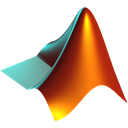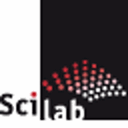Unlocking New Possibilities: Top SymPy Alternatives for Symbolic Computation
SymPy is a powerful Python library renowned for its symbolic computation capabilities, covering everything from basic arithmetic to advanced calculus and quantum physics. While it's a fantastic free and open-source tool, users often seek SymPy alternatives for various reasons – perhaps they need a different programming environment, more specialized features, or a broader ecosystem. This guide explores the best alternatives to SymPy, helping you find the perfect symbolic computation solution for your specific needs.
Top SymPy Alternatives
Whether you're looking for commercial-grade power, another open-source gem, or a web-based solution, this list has you covered. Dive into these robust symbolic computation systems that offer compelling features beyond what SymPy provides.

MATLAB
MATLAB is an enterprise-class computing environment and programming language primarily known for numerical computation, but it also offers strong symbolic capabilities through its Symbolic Math Toolbox. It's a commercial platform available on Mac, Windows, Linux, and even web, Android, iPhone, and iPad, making it highly versatile. Features like Simulink and an embedded debugger provide a comprehensive environment for engineering and scientific applications, offering a robust SymPy alternative for those needing a more integrated and commercial solution.

R (programming language)
R is a free and open-source software environment designed for statistical computing and graphics. While primarily focused on statistics, R's extensive package ecosystem allows for symbolic manipulation through various add-ons. It's available on Mac, Windows, Linux, and BSD. For data scientists and statisticians looking for a SymPy alternative that integrates symbolic capabilities within a powerful statistical framework, R is an excellent choice, offering features like automatic data loading and data mining.

Sage
Sage, also known as SageMath, is a free, open-source mathematics software system licensed under the GPL. It's unique in that it combines the power of many existing open-source packages, including NumPy, SciPy, Matplotlib, and some aspects of R, Maxima, and more, into a common Python-based interface. Available on Mac, Windows, Linux, and web, Sage is a comprehensive SymPy alternative for symbolic computation, numerical analysis, algebra, calculus, and more, making it a powerful and versatile choice for academic and research purposes.

Mathematica
Mathematica is a definitive technical computing system that spans machine learning, neural networks, data science, visualizations, and of course, symbolic computation. It's a commercial platform available on Mac, Windows, Linux, and web. As a SymPy alternative, Mathematica offers extensive features including symbolic computation, calculus solving, constructive geometry, equation solving, and a graphing calculator, providing a highly integrated and advanced environment for technical computing across a vast array of disciplines.

SciPy & Numpy
SciPy (pronounced "Sigh Pie") and NumPy are fundamental open-source Python libraries for mathematics, science, and engineering. While SymPy focuses on symbolic computation, SciPy and NumPy are geared towards numerical computation, array manipulation, and scientific algorithms. They are free, open-source, and available on Mac, Windows, and Linux. While not direct symbolic computation replacements, they are essential companions in the Python scientific ecosystem and serve as a powerful numerical SymPy alternative for those whose primary needs are in numerical analysis.

Maxima
Maxima is a powerful free and open-source system for the manipulation of symbolic and numerical expressions. It handles differentiation, integration, Taylor series, Laplace transforms, and more. Available on Mac, Windows, and Linux, Maxima is a robust SymPy alternative for those who need a dedicated computer algebra system without the Python-centric approach of SymPy. Its strong capabilities in symbolic computation and algebra make it a direct competitor.

wxMaxima
wxMaxima provides a user-friendly, document-based graphical interface for the Maxima computer algebra system. It uses wxWidgets and runs natively on Windows, X11, and Mac OS X. As a free and open-source SymPy alternative, wxMaxima offers all the symbolic manipulation power of Maxima with a more accessible front-end, making it ideal for users who prefer a graphical environment for their algebraic computations.

Xcos
Xcos is a graphical editor within Scilab designed for modeling and simulating hybrid dynamical systems. While Scilab itself is a numerical computation package similar to MATLAB, Xcos focuses specifically on block-diagram simulation. It is free and open-source, available on Mac, Windows, and Linux. For users whose primary need is system simulation rather than pure symbolic manipulation, Xcos offers a specialized SymPy alternative, allowing for visual model design and simulation.

fxSolver
fxSolver is a free, web-based online math solver, equation editor, database, and graphing calculator. It's a convenient SymPy alternative for quick calculations and problem-solving without needing to install any software. Features include a formula builder, equation editor, graphing capabilities, and a library of pre-defined equations, making it an excellent resource for students and professionals needing accessible, on-the-go mathematical assistance.

Microsoft Mathematics
Microsoft Mathematics is a free desktop graphing calculator for Windows that helps visualize and explore mathematical concepts. While no longer actively developed, it remains a valuable SymPy alternative for Windows users who need a straightforward tool for graphing and basic calculations. Its features include calculators and a powerful graphing calculator, making complex mathematical ideas more approachable through visual representation.
Choosing the best SymPy alternative depends heavily on your specific requirements, such as platform preference, need for open-source software, desired features like symbolic computation, numerical analysis, or integrated development environments. Explore these options and find the perfect fit to enhance your mathematical and scientific computing workflow!